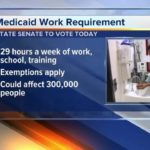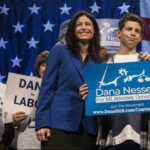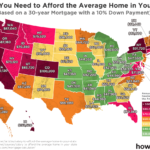Two things right up front: All things considered, most people do not choose a city to live in based on local taxes. Second, state lawmakers have essentially stolen $8 billion over the past 16 years by reneging on Michigan’s long-held agreement to equitably share sales tax revenues with local communities.
As a result, most of Michigan’s mid-sized cities are struggling, to the point that they now play little role in the state’s economic vitality.
As the Detroit Free Press reported today, five Michigan urban areas — metro Detroit, Grand Rapids, Ann Arbor, Lansing and Kalamazoo — produce more than $3 of every $4 of economic output in the state. What that means is those five metropolitan areas generated about $328 billion of the state’s $426 billion in gross domestic product as of the end of 2016.
The vast majority of Michigan’s economic productivity is located in a tiny portion of the state’s overall geography, while cities in the rest of the state grapple with budget cuts that hurt basic services, aging infrastructure, deep long-term debts due to underfunded municipal employee pension systems, and a property tax system that limits their ability to finance improvements.
A 2016 Michigan Municipal League report found that over 10-year period, Michigan ranked last in the nation, by a wide margin, in providing financial support for cities.
At the annual Mackinac Policy Conference this morning, business and government leaders engaged in a lively discussion about all these issues and more as too many Michigan cities represent places where people no longer want to live and businesses do not want to locate.
Tony Minghine, CEO of the MML, told the gathering that Republicans and Democrats alike are failing to address this worrisome phenomenon.
“We won’t have a prosperous Michigan if our cities fall, one by one,” Minghine said.
One initiative under dissection on the island is Gov. Rick Snyder’s “Marshall Plan” to create the kind of talented workforce that employers need. But what’s to stop those receiving higher education – potentially a tuition-free community college experience — or vocational skills from fleeing the state after their training is complete?
A new study by the National Association of Independent Colleges and Universities found that 4-year college graduates continue to seek careers in big cities, mostly on the east and west coasts. A deep dive into the data by the Wall Street Journal found that most University of Michigan and Michigan State University grads head to far-flung places such as Seattle, Denver, Chicago, New York, Dallas, Atlanta, San Francisco or Washington.
During the Granholm administration, an overly ambitious plan to create “Cool Cities” across Michigan degenerated into a bureaucratic check-off list in which nearly every city of somewhat significant size was labeled a Cool City.
At this point, maybe efforts to polish up our state’s towns will not include Alpena or Grayling, but how about Mount Pleasant, Traverse City, Bay City, Battle Creek or Jackson? And how do we prevent a slide among those five main metros that dominate the Michigan economy?

Downtown Minneapolis
A participant in this morning’s panel discussion was former St. Paul, Minn., mayor Chris Coleman, who warned: “It’s not just about creating hip places to live with microbreweries, we have to rebuild cities for everyone by addressing education, job creation and equity.”
It was hardly a coincidence that the Detroit Regional Chamber of Commerce, chief organizer of the Mackinac event, chose a representative from the Minneapolis-St. Paul region to discuss the plight of Michigan cities. Minnesota’s Twin Cities have emerged as one of the nation’s most successful economic models for metropolitan areas.
For the doubters in Michigan, seven-county Metro Minneapolis is 12th in per capita income among the 53 U.S. regions with a population of one million or more, which ranks best among the Great Lakes states. Metro Detroit is 30th, and Grand Rapids is 38th.
Michigan Future Inc., a research group, just released a report demonstrating how Minneapolis-St. Paul’s rise could point the way for the Detroit area and Grand Rapids.
Michigan Future director Lou Glazer, in a guest column for Bridge Magazine, explained how the Twin Cities collaborative approach went well beyond low taxes or a business-friendly atmosphere:
“The Twin Cities rank at or near the top among the nation’s large metro areas in a variety of livability measures, including per capita income, proportion of adults who work, educational attainment, transit, quality of government services, and amenities such as parks and bike trails.”
“Although it’s one of the wealthiest and most livable large metro areas in the country, Metro Minneapolis didn’t attain that status overnight. A decades-long focus on public investment in education, transit, parks, cultural amenities and environmental protection are key ingredients in producing vibrant core cities and strong surrounding suburbs.”
One big caution: The Minnesota puzzle pieces may not fit well with the Michigan conservative politics that has led to a Republican governor and Legislature over the past eight years.
Even in Metro Detroit, some of the Minneapolis agenda may be shunned, such as higher taxes, or openly welcoming the LGBT community and foreign refugees. A tax-sharing program, which requires nearly 200 local entities to share hundreds of millions of dollars annually in commercial and industrial growth in the metro area, would especially have a hard time gaining public support.











